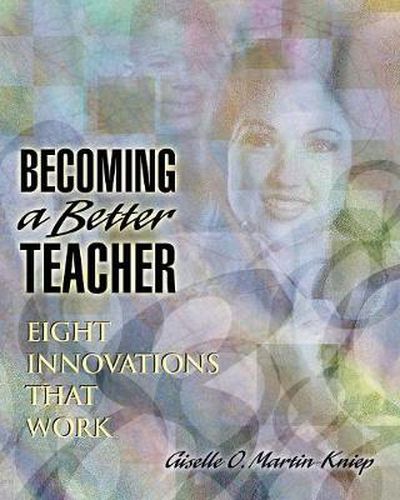Readings Newsletter
Become a Readings Member to make your shopping experience even easier.
Sign in or sign up for free!
You’re not far away from qualifying for FREE standard shipping within Australia
You’ve qualified for FREE standard shipping within Australia
The cart is loading…






This book provides K-12 educators with key information about some of the most effective teaching and learning tools available today-in one convenient publication. Each of the innovations has a long history of use and has been researched and evaluated in a variety of settings. Giselle Martin-Kniep chose these specific innovations because, as a whole, they foster a student-centered classroom environment that is both equitable and rigorous. In separate chapters for each topic, she addresses 1) essential questions, 2) curriculum integration, 3) standards-based curriculum and assessment design, 4) authentic assessment, 5) scoring rubrics, 6) portfolios, 7) reflection, and 8) action research. Annotated lists of recommended resources provide suggestions for further exploration of each topic. Readers new to these topics will gain a basic understanding of each and learn how to use them to create a student-centered classroom. More experienced educators can also benefit from reexamining these innovations and considering them as parts of a comprehensive whole. Numerous examples from all grade levels, along with design modules, templates, and checklists, make this an invaluable guide for teachers and administrators.
$9.00 standard shipping within Australia
FREE standard shipping within Australia for orders over $100.00
Express & International shipping calculated at checkout
This book provides K-12 educators with key information about some of the most effective teaching and learning tools available today-in one convenient publication. Each of the innovations has a long history of use and has been researched and evaluated in a variety of settings. Giselle Martin-Kniep chose these specific innovations because, as a whole, they foster a student-centered classroom environment that is both equitable and rigorous. In separate chapters for each topic, she addresses 1) essential questions, 2) curriculum integration, 3) standards-based curriculum and assessment design, 4) authentic assessment, 5) scoring rubrics, 6) portfolios, 7) reflection, and 8) action research. Annotated lists of recommended resources provide suggestions for further exploration of each topic. Readers new to these topics will gain a basic understanding of each and learn how to use them to create a student-centered classroom. More experienced educators can also benefit from reexamining these innovations and considering them as parts of a comprehensive whole. Numerous examples from all grade levels, along with design modules, templates, and checklists, make this an invaluable guide for teachers and administrators.